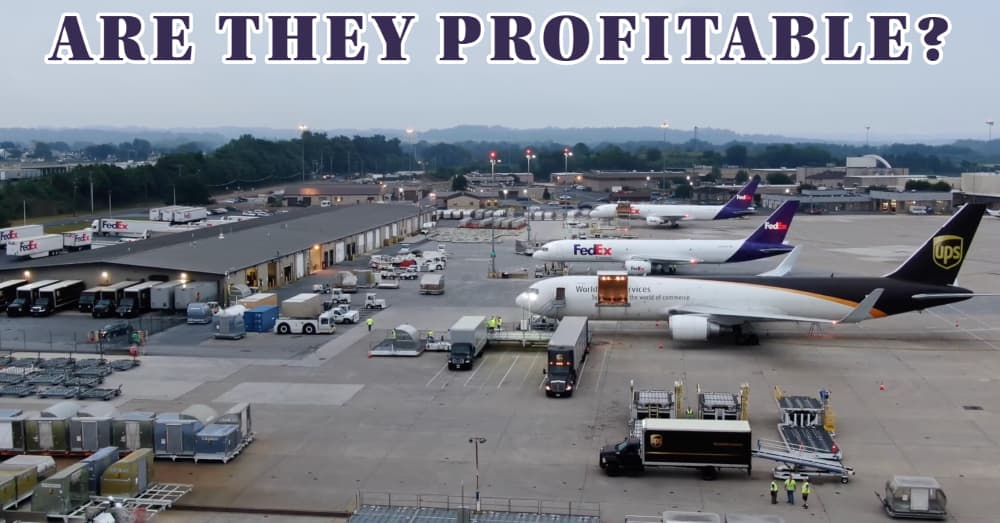
How Airlines Transport Your Goods During Coronavirus COVID19
8-minute read (12-minute watch (feel free to increase play speed 2X))
Why are airplanes grounded when the world needs it most? How will airlines fly again? it employs millions and acts as the central nervous system of international business and leisure.
YOU’LL LEARN:
- How Demand for International Travel Has Changed in the Pandemic
- Impact of COVID-19 on Air Cargo
- What Passenger Airlines Are Doing to Minimize the Supply-Demand Mismatch
- Why It Is Possible to Derive Profits from “Ghost” Flights
- What Happens Next
TABLE OF CONTENTS:
00:35 – Dramatic Change in Demand for Travels
01:03 – What Rides Below the Cabin
01:25 – Explaining the Supply-Demand Mismatch
03:27 – PPE Production Before and During the Pandemic
04:19 – How Public Health Has Saved Air Cargo
05:40 – Plane With No Passengers is Not an Empty Plane
06:22 – Passenger vs Freighter Plane Capacity
07:08 – Reasons for Transporting Cargo with Passenger Aircrafts
08:30 – “Ghost” Flights Statistics
09:17 – New Hubs Emerging
Back in March 2020, when COVID-19 reached a pandemic status, almost every airline in the world drastically scaled back its flying.
It varied from region to region and airline to airline, but the one common trend everywhere was that if any route got cut it was almost certainly a long-haul one.
In the era of quarantine periods, border closings, and other travel restrictions, there is near zero demand for long-haul international travel, so intercontinental flights were quickly removed from airline schedules.
For example, in April 2019 about 500 round-trip flights per day would fly between Europe and the US. However, in April 2020 that number was reduced to about 80 per day. That represents between an 80% and 90% reduction.

Ignoring airline revenue, you’d think that that would be a loss-free situation, though. It reduces carbon emissions. Many governments are covering the salaries of furloughed workers.
It reduces airline expenditure, and nobody’s riding in the cabins anyways. But that doesn’t consider what rides below the cabin.
On nearly every intercontinental flight in the belly hold, among the hundreds of passenger bags, there is cargo. In fact, 45% of the world’s air cargo is carried in this method.
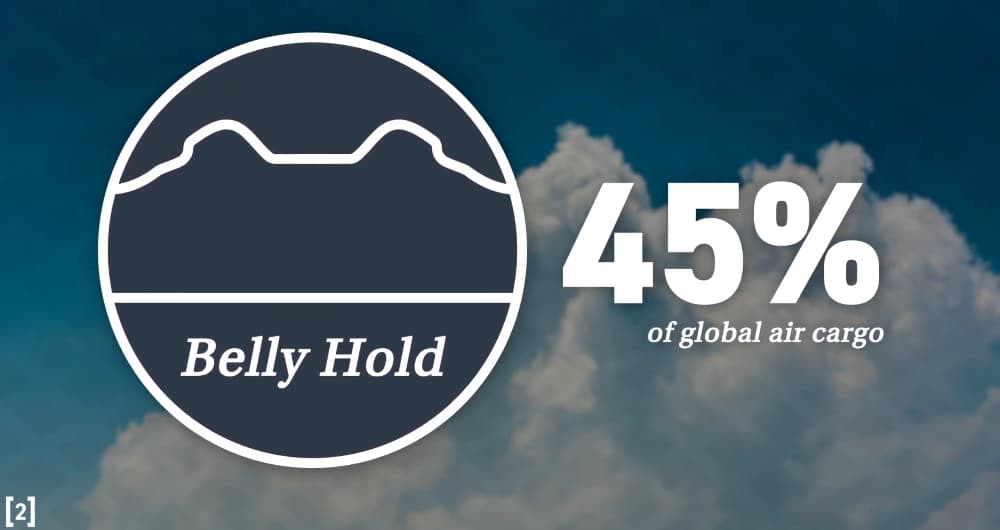
Now, the math to explain the supply and demand mismatch is simple. The proportion of cargo carried on passenger aircraft varies from route to route. For example, 60% of Western Europe to US air cargo flies on passenger planes.
80% to 90% of Transatlantic passenger flights are not flying, which means that about 50% of air cargo capacity in this market has disappeared in a matter of weeks.
The situation is less severe in other markets, but industry-wide the overall air cargo capacity reduction was about 23% in March 2020. That’s the supply figure. But what about demand?

As a huge proportion of the world entered various lockdown scenarios, economic forecasts plummeted. The extent of the financial toll will not be clear for a while, but it is clear that it is deeply negative. This all affects air cargo demand.
On a macro level, consumers are buying less, which means less is shipped, which means companies are buying less, which means less is shipped, which means suppliers are making less, which means less is shipped.
On a micro-level, different jurisdictions worldwide differ on the exact details of their coronavirus response, but in many places, factories are shut down, which means supply chains are cut.
From an economic perspective, one would predict that demand would almost certainly be down. But like all things in the age of coronavirus, there is another dominant perspective. That of Public Health.

From almost the moment COVID-19 emerged, it became clear that it was a highly infectious virus, which means that a crucial component of the safe treatment of an infected individual is the use of personal protective equipment or PPE.
In this context, that means masks, shields, gowns, and more, which healthcare facilities always talk but never in the quantity needed to cover nearly universal staff usage for a long period.
That means that, in order to reduce the risk of staff exposure, nearly every hospital in the world needed more PPE.
Purely by chance, it turns out that the number one medical PPE producing country in the world was also the first country to experience COVID-19. China.
Before the pandemic, the country produced 20 million medical masks per day or about half of the world’s supply. By the beginning of March, though, this had already been scaled up to more than 100 million per day.
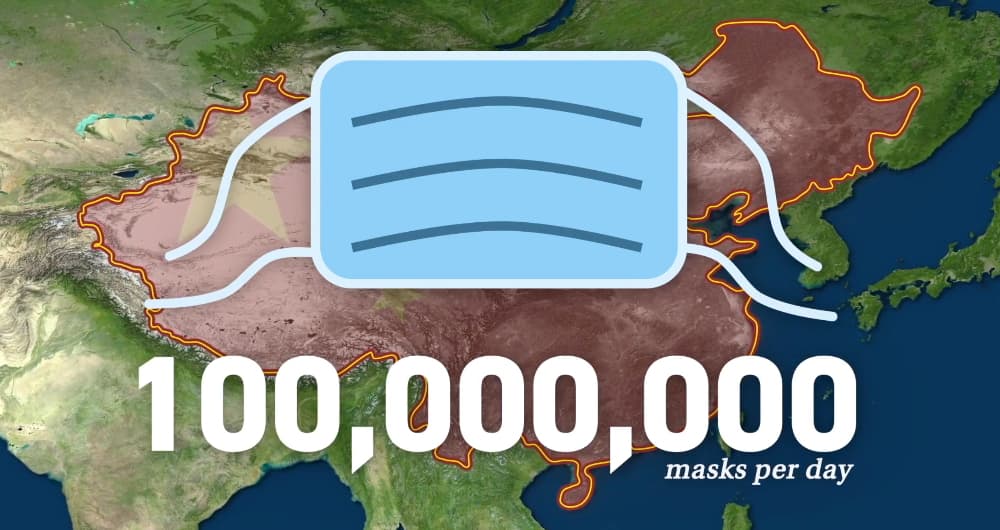
It was at exactly this time when, simultaneously, China’s manufacturing industry started to inch back to life, and the virus truly took hold of the rest of the world.
With how fast COVID-19 ramped up, many hospitals in the hot spots, like Italy, Spain, and the US were reusing masks and, even with that technique, were down to only days of supply.
They needed supply from China and other manufacturing hubs as fast as possible. In the logistics world, “as fast as possible” means air cargo.
Thanks to this unprecedented and urgent demand for PPE and other medical supplies, demand for air cargo only dropped by 15% in March 2020, considering air cargo capacity dropped by 23%.
That means that there was an 8% gap between supply and demand.

In the context of this enormous industry, 8% is huge, and so the laws of supply and demand followed their course. The cost to transport goods by air spiked, especially in crucial Asia to US and European markets.
In the last two weeks of March, air cargo rates from Hong Kong to North America jumped 27% above normal, while rates from Shanghai to Europe increased by 50%.
Of course, after a supply and demand mismatch, economic forces pushed companies to increase supply, which is exactly what happened. Cargo airlines that could, massively ramped up their flights.
For example, Kalitta Air, an American cargo airline, brought some aircraft out of storage and increased its long-haul flying by nearly 50%.
However, there is only so much that these cargo airlines can do. They only have so many aircraft, so many pilots, and so many mechanics. They can’t massively ramp up their operations in a short time.
Who did have extra capacity, though, were passenger airlines, and that’s where a small solution emerged. A plane with no passengers is not necessarily an empty plane.
An average airline earns 15% to 20% of its revenue through cargo. But keep in mind what an average airline looks like.
Most of the average North American airlines’ flying is domestic and short-haul, where little cargo is carried, so the proportion of revenue coming from cargo on a long-haul flight is far higher.
Considering that, on a normal long-haul passenger flight a considerable portion of the cargo hold is filled with baggage; so, that 15% to 20% is derived from only some of the capacity on only some of the flights.
Airlines soon realized that there was a possibility of turning a profit flying a passenger plane with no passengers.
Now, normally, a passenger a330, for example, has capacity for 38,000 pounds or 17,000 kilograms of cargo in its belly hold.
That’s compared to the freighter version of the a330, which can carry 132,000 pounds or 60,000 kilograms of freight thanks to its completely empty cabin.
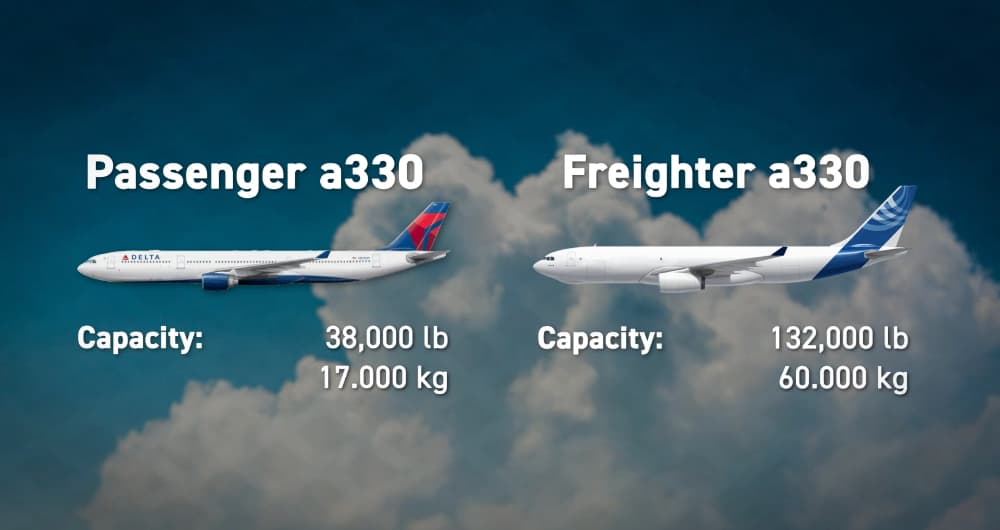
That means that the passenger a330 can only carry 29% as much cargo as its freighter counterpart.
However, considering that freight rates have risen by as much as 50%, that means that flying these aircraft can earn about 44% as much per flight as their freighter counterparts normally do.
Making less than half as much as cargo airlines clearly would not make flying passenger aircraft for cargo purposes worth it. But there is more to consider.
First, jet fuel prices are at an all-time low, largely in response to all-time low demand. The same gallon that would have cost airlines $2,2 in January 2020 costs about $0,4 in late April 2020, and those prices are continuing to drop.
In normal conditions, fuel is airlines’ number one cost. Having that drop by a factor of five reduces the cost to operate a flight dramatically.
That means that they need to earn far less than what a cargo airline does in normal conditions to break-even.
In addition, most airlines are paying their pilots and staff anyways.
In the US, for example, airlines are required, as a condition of their government’s relief funding, to not layoff or furlough any staff, so the marginal staffing cost to operate an additional flight is minimal.
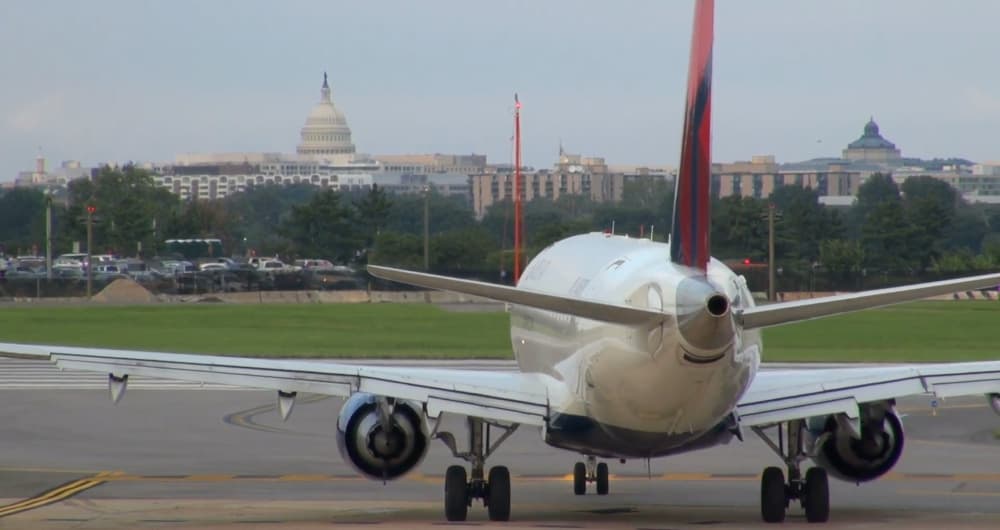
Thirdly, with no passengers, airlines have quickly innovated new ways to carry cargo.
Many airlines have loaded their passenger cabins with cargo placed directly on top of and fastened to seats. This dramatically increases complexity and loading time, but it also dramatically increases capacity.
All of these conditions and circumstances combined to the point that, for this brief moment in time, economics dictate that an airline can turn a profit flying a passenger plane without passengers.
Big airlines like American Airlines, Air Canada, Lufthansa, and Air New Zealand began cargo-only flights. So many, in fact.
The United Airlines, for example, had up to dozens of passenger-less passenger planes airborne at the same time all around the world.
This also created flights that have never happened before, like a 16-hour non-stop cargo-only trip from Sydney to Toronto by Air Canada.
But it wasn’t all just big airlines on long flights. Smaller airlines, too, got in on the game.
Air Greenland started a link on a tiny propeller Dash 8 to transport coronavirus tests for processing in a Danish lab. Titan Airways flew medical supplies to the remote island of St. Helena on a passenger a318.
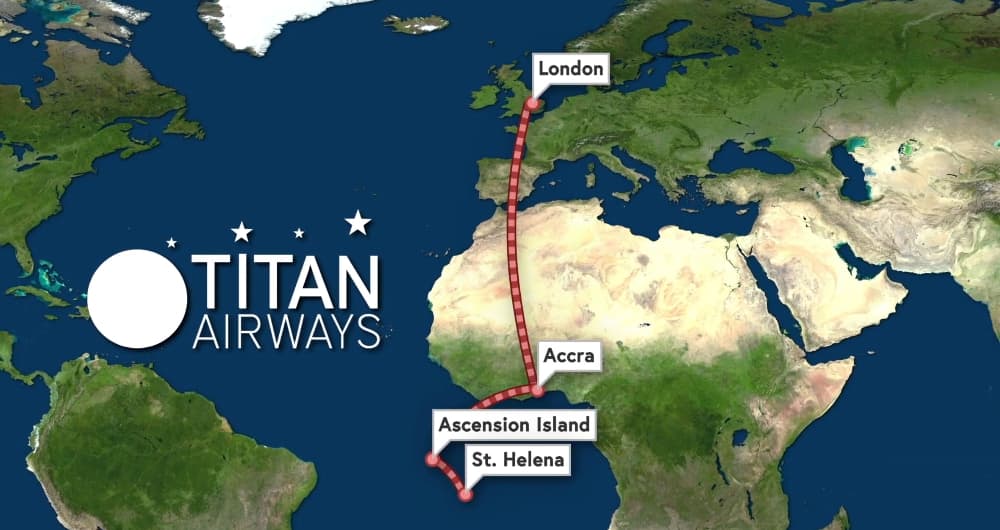
Wizz Air flew their passenger a321s to Shanghai via Kazakhstan to transport medical supplies to Hungary.
These circumstances have also led to a dramatic reshuffling of rank and order in the aviation world.
The list of the world’s busiest airports in terms of annual aircraft movements is normally headed by Atlanta, followed by Chicago, Los Angeles, Dallas, Beijing, and a number of other major hub airports.
Normally, you wouldn’t expect an airport from America’s third-least populous state anywhere on the first pages of that list. However, for a brief moment in April 2020 that was the case.
Anchorage Airport in Alaska became the world’s busiest airport, thanks to its strategic location. It has long been a busy cargo airport, as it acts as a stopover point for cargo flights from Asia to North America.
They stop here because it is more efficient for aircraft on long-haul flights to take less fuel and more cargo and refuel halfway through than fly nonstop to their destination.
Also, in some cases, freight is sorted and exchanged between aircraft and Anchorage.
In April 2020, the US ranked number one in the world for new and total coronavirus cases, so it had a tremendous need for medical supplies, which are overwhelmingly produced in Asia.
Hundreds of cargo aircraft per day passed through Anchorage on their way between Asia and the US. While every other major airport in the US fell into relative silence, Anchorage was busier than ever.
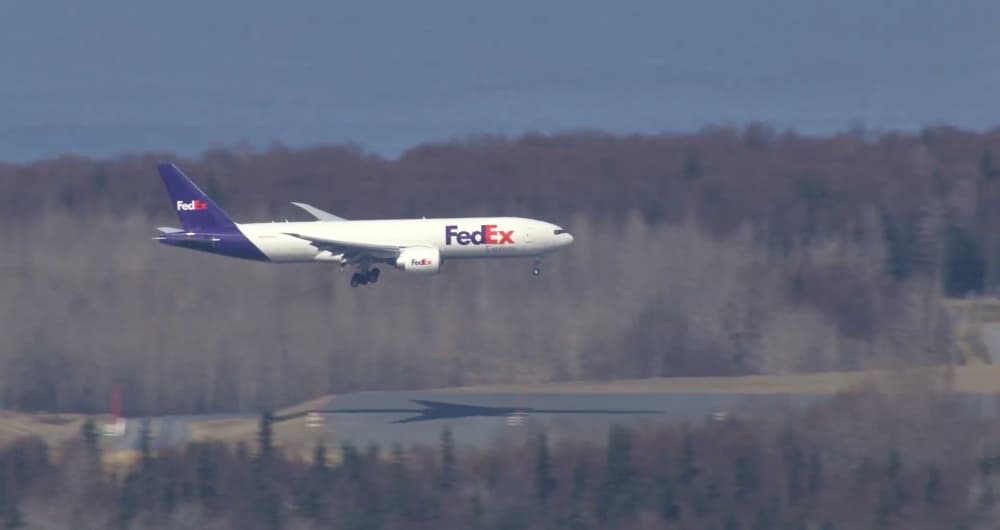
There is, however, one final issue that the air cargo world is facing. Beyond the short-term issue of too much demand, the long-term issue is that this demand will not last.
Global air cargo demand closely tracks with global economic health.
Every indicator suggests that the economy will not emerge from the COVID-19 pandemic even close to as strong as when it’s entered, so there will undoubtedly be some slow months and years for air cargo.
Once urgent demand for medical supplies eases and buyers have the time to switch to slower forms of shipping, the air cargo world will almost certainly follow the fate of its passenger-carrying colleagues.
P.S. Easy Freight Ltd helps New Zealand importers & exporters to save money on international freight and reduce mistakes by guiding how to comply with Customs and biosecurity rules.
➔ Contact us now to learn how we can assist you.
